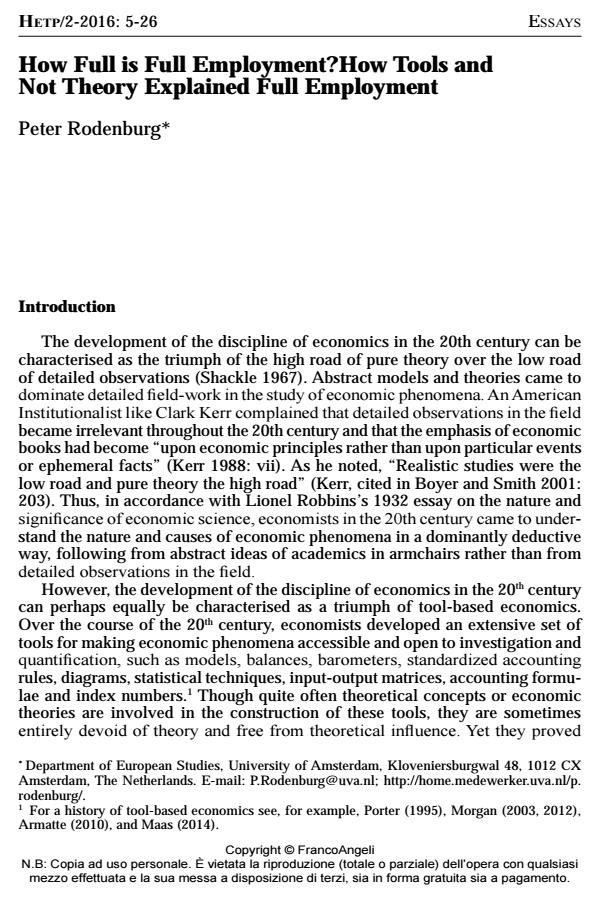How Full is Full Employment?How Tools and Not Theory Explained Full Employment
Journal title HISTORY OF ECONOMIC THOUGHT AND POLICY
Author/s Peter Rodenburg
Publishing Year 2016 Issue 2016/2
Language English Pages 21 P. 5-25 File size 310 KB
DOI 10.3280/SPE2016-002001
DOI is like a bar code for intellectual property: to have more infomation
click here
Below, you can see the article first page
If you want to buy this article in PDF format, you can do it, following the instructions to buy download credits

FrancoAngeli is member of Publishers International Linking Association, Inc (PILA), a not-for-profit association which run the CrossRef service enabling links to and from online scholarly content.
The post-war debate on full employment policy was blurred and unclear since the concept of full employment itself was theoretically unclear and un-operational. Unable to theoretically determine the unemployment level of full employment, economists tried to find more empirically based ways to determine the level of full employment. This paper argues that economists turned the UV curve (or Beveridge curve) and Phillips curve into practical, empirical tools of investigation and measurement for full employment. In this role economists could establish quantitative facts of unemployment that were not derivable from theory alone and so fulfilled the role of a measuring instrument in economics. Consequently, they not only enhanced theory but gave specific, quantitative and empirically based interpretations of full employment that economic theory couldn’t deliver. This paper shows how the UV and Phillips curves became tools for disentangling complex and theoretically underdetermined phenomena and measurement devices for the performance of the labour market.
Keywords: Keynes on full employment, graphical methods, Phillips curve, tool-based economics, methodology
Jel codes: B22, B41, E24, E61, J08
Peter Rodenburg, How Full is Full Employment?How Tools and Not Theory Explained Full Employment in "HISTORY OF ECONOMIC THOUGHT AND POLICY" 2/2016, pp 5-25, DOI: 10.3280/SPE2016-002001